
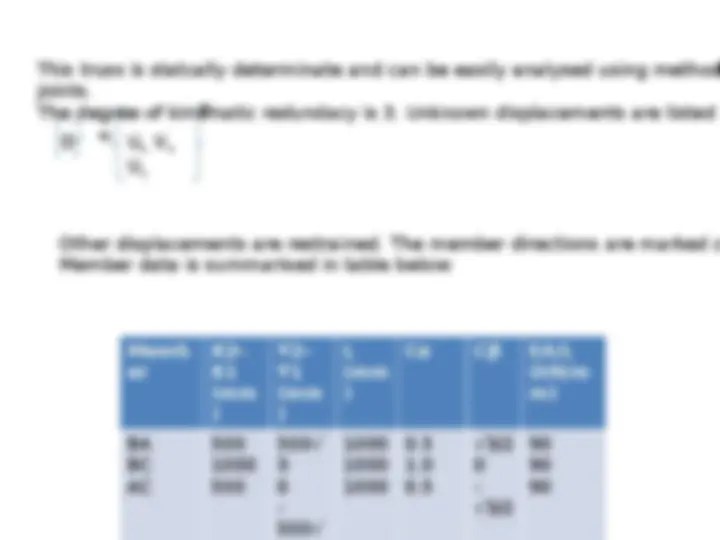
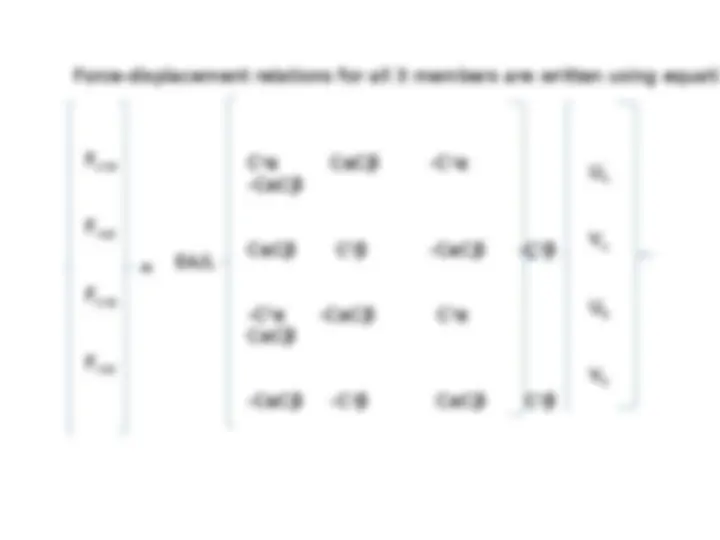
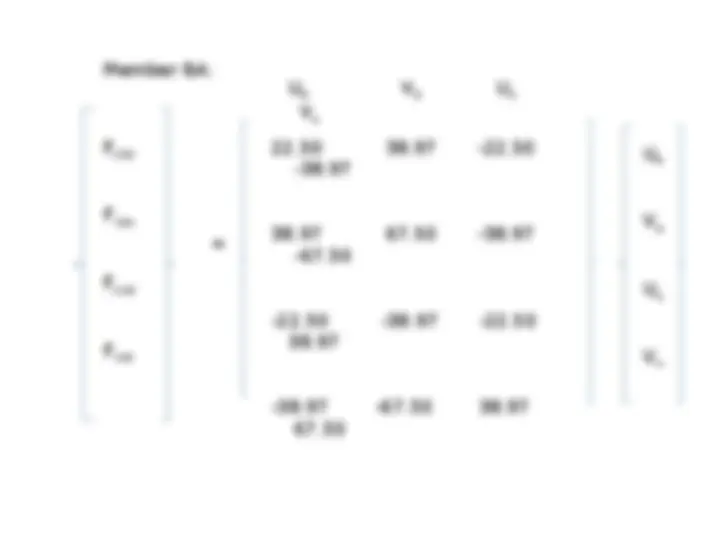
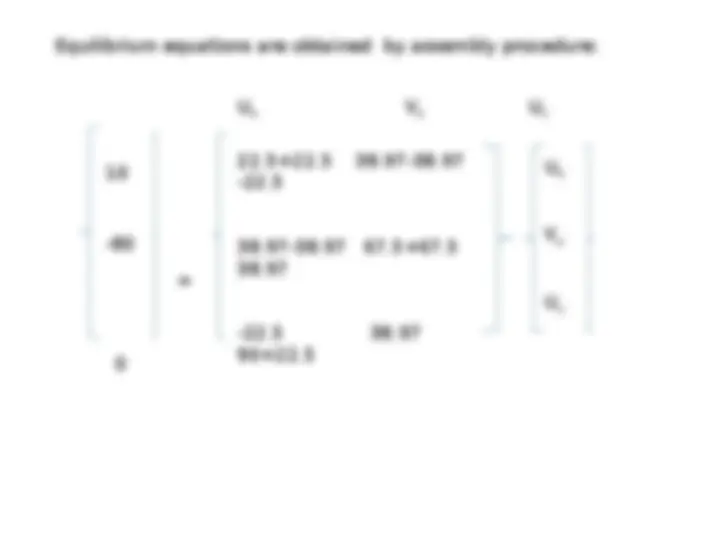
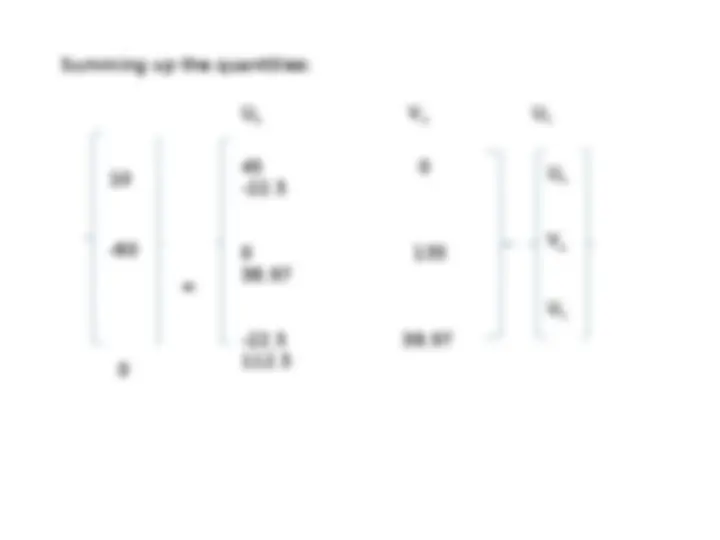
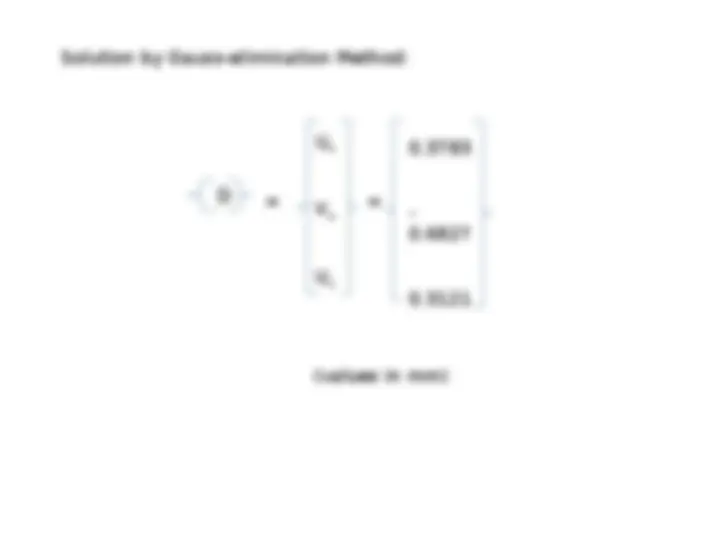
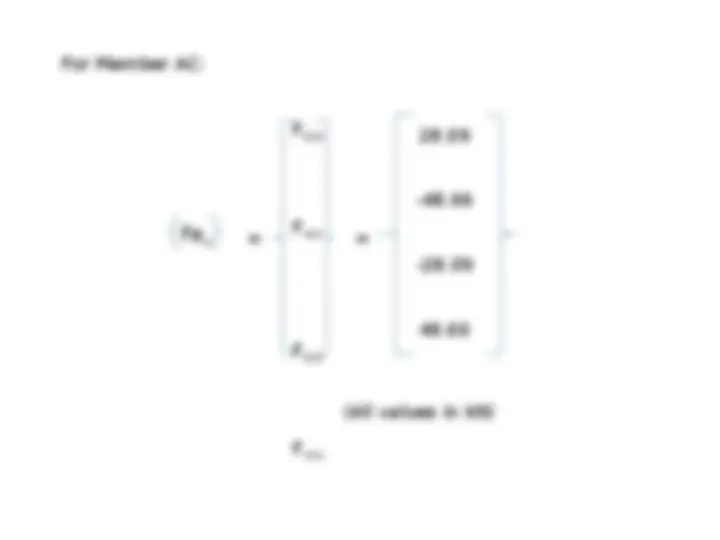
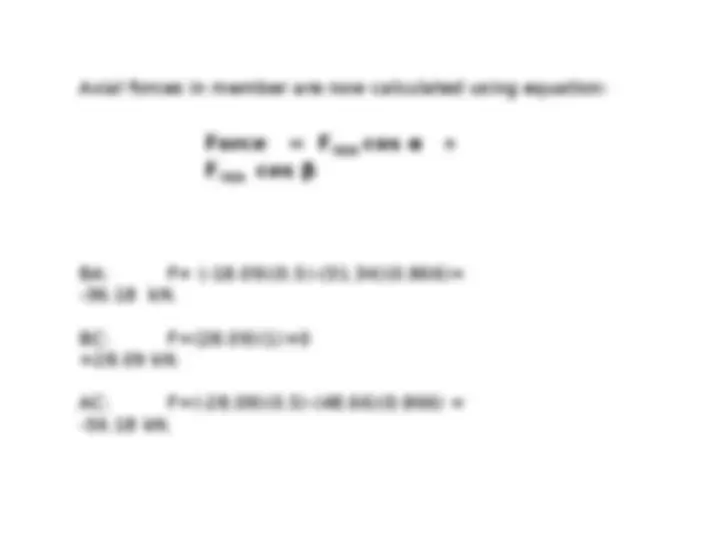
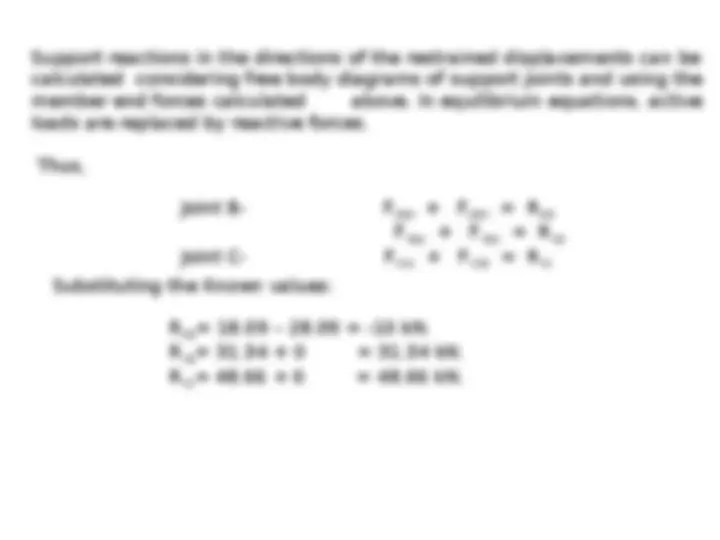


Study with the several resources on Docsity

Earn points by helping other students or get them with a premium plan


Prepare for your exams
Study with the several resources on Docsity

Earn points to download
Earn points by helping other students or get them with a premium plan
Community
Ask the community for help and clear up your study doubts
Discover the best universities in your country according to Docsity users
Free resources
Download our free guides on studying techniques, anxiety management strategies, and thesis advice from Docsity tutors
Truss By Stiffness Matrix ,Solution by Gauss-elimination Method.
Typology: Study notes
1 / 15

This page cannot be seen from the preview
Don't miss anything!










m
G
m
G
T
m
T
m
G
s
T
m
T
m
m
T
m
G
G
G
G
The Fig. shows a plane truss with 3 members. All members are of length 1000 mm and sectional area 600 mm^2 .Young’s Modulus is 150 kN/mm^2. Analyse by Stiffness Method. 80kN 10kN Y X
⁰
500√3mm 1000 mm
Force-displacement relations for all 3 members are written using equatio C^2 α CαCβ -C^2 α -CαCβ CαCβ C 2 β -CαCβ -C 2 β -C^2 α -CαCβ C^2 α CαCβ -CαCβ -C 2 β CαCβ C 2 β
Member BA:
Member AC: 22.50 -38.97 -22.
-38.97 67.50 38. -67. -22.50 38.97 22. -38. 38.97 -67.50 -38.
Uc Vc
Equilibrium equations are obtained by assembly procedure:
Solution by Gauss-elimination Method: D = (values in mm)
Member end forces referred to global axes are initially calculated using eqn 1 along with the known displacements:
For Member BA:
For Member AC: (All values in kN)
Axial forces in member are now calculated using equation:
-36.18 kN. BC: F=(28.09)(1)+ =28.09 kN. AC: F=(-28.09)(0.5)-(48.66)(0.866) = -56.18 kN.